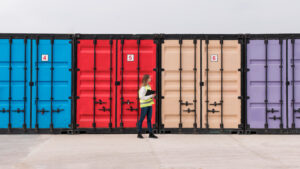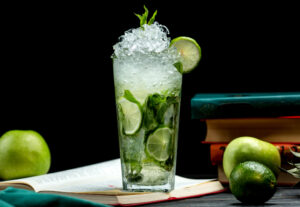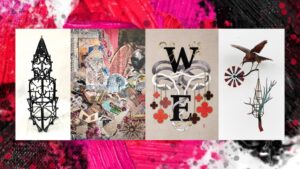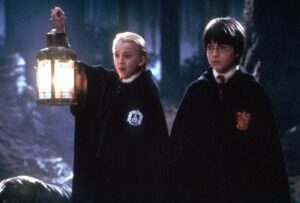Clara Peeters’s Still Lifes Are Even Better Than the Real Thing
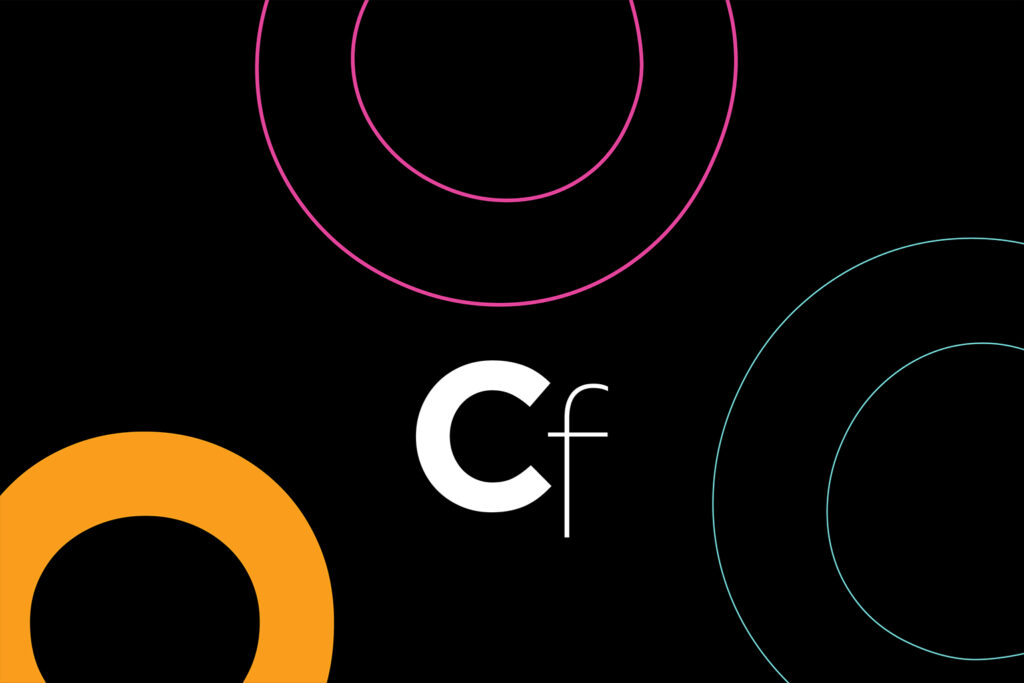

The city of Gouda in Holland acquired a monopoly on the Dutch cheese trade by 1395, selling its eponymous dairy product for more than two centuries before Clara Peeters applied oil to canvas. Contemporaneous viewers of “Still Life with Cheeses, Artichoke, and Cherries,” painted sometime between 1612 and 1618 and now exhibited at the Los Angeles County Museum of Art, would have recognized the cheese instantly — every Dutchman worth his salt knew the subtle nutty flavor and buttery plasticine snap of a Gouda slice. In her composition, Peeters presents a neatly cleaved wheel wrapped in a thin layer of white-streaked red wax, seeming to glow in contrast to a dark background, as if it’s been generated from the void itself. It is the single largest product in the painting, dominating the composition from its seat on a smudged pewter dish, its mottled surface studded with small sparkling salt crystals, its surface striated with slight, irregular gradations from its resistant encounter with a chisel.
The color of the Gouda is tinged with a pleasing orange, its slight tan differentiating it from the greenish-brown of a Kruidenkaas wedge flavored with parsley and a block of crumbly, grayish Trappist cheese, which are positioned in front of and on top of it, respectively. Balanced atop the Trappist cheese is a blue-and-white porcelain plate bearing thick ribbons of butter marked by the serrations of the knife used to scrape it from the crock. A round, browned roll is placed before the tableau of cheese, while a freshly cut-in-half artichoke, its inner leaves shifting from pink to green from heart to outside tendrils in a borderline erotic display, dominates the left. Behind the fleshy artichoke is a pewter pillar, decorated in exquisite floweret designs, a pinch of sparkling, diamondiferous salt atop. Scattered in front of the meal are several lurid red cherries, some still connected by their stems. “Still Life with Cheeses, Artichoke, and Cherries” isn’t just a picture of life — it’s something more. Peeters has captured, with unnerving verisimilitude, a pure, crystalline moment of time.
Before looking at a Peeters composition, we need to think about the larger context of the genre of still life. Dismissed as mere demonstration of technique (which in Peeters’s case was considerable) or as a kind of early modern luxury advertisement — all those canvases with fowls and fruits, cheese and nuts — works in this variety are too often passed over as mere painterly ephemera. Though the genre has a history dating back to antiquity, and painters from Caravaggio to Cézanne practiced the form, there remains a tendency to interpret still lifes as impressive exercises more than artistic expression. Even when the genre is given critical attention, aesthetic judgment of Dutch examples — works by Willem Claesz, Jan Davidsz de Heem, Willem Kalf, and Peeters, for instance — is often subsumed into sociological or historical readings. In those interpretations, the stunning accuracy of still life is understood as a reflection of Dutch secularism encouraged by the Calvinist Reformation, which replaced potentially idolatrous religious subjects with fruit and vegetables; or a celebration of the Netherlands’s profound wealth, the nascent capitalist republic’s worldly treasures of goods on full display in the form of Dutch cheese and Chinese porcelain, Italian wine and Hanseatic salt. As Sybille Ebert-Schifferer puts it in Still Life: A History (1999), critics have historically consigned still life painters to “the lowest rank among artists,” interpreting their compositions as “symptomatic of a decline in artistic taste.”

Perhaps it was due to the genre’s low status that it was one of the few forms open for women to demonstrate their talents — which Peeters did, establishing a reputation as a genius painter in a field dominated by men. Little is known of her biography; though she was most likely an Antwerp native, she appears not to have been a member of the Guild of St. Luke, the confraternity of painters in that city. She may have trained under the comparably brilliant painter of still lifes Osias Beert, or even Jan Brueghel the Elder, but it’s also been hypothesized that Peeters led her own artistic school. Regardless of how or where they were made, 31 paintings are substantiated with her signature, and more than 100 are attributed to her. Of these, it’s possible that more than a dozen were rendered before Peeters turned 18 — a veritable child prodigy. Though she was known in her time for her “accurate, meticulous portrayals of nature, which include small details such as dew drops and insect bites,” as Julia Binswanger writes in Smithsonian Magazine, she was largely forgotten for centuries before being recently resurrected in scholarly circles, with exhibitions of her work held in institutions such as the Prado.
The philosophical importance of Peeters’s work, however, cuts through any interpretive squabbles and even historical restraints as cleanly as a knife cleaves cheese. Even if institutionalized chauvinism made religious or historical subjects forbidden to her, her still lifes burst forth with the rapturous clarity of the present. A still life, as its name suggests, stills life — it displays a slice of time divorced from the whole; it calms the vortices and eddies that compose the tumult of existence. Far from a mere exercise in domesticity and commercialism, an adept still life is capable of temporal defamiliarization — fundamentally, it makes reality strange. Examine “Still Life with Cheeses, Artichoke, and Cherry” or any number of other compositions by Peeters, such as “Table with a cloth, salt cellar, gilt tazza, pie, jug, porcelain dish with olives, and roast fowl” (c. 1611) or the unsigned “Still Life with Crab, Shrimps, and Lobster” (c. 1635–40), and it becomes clear that they all share not just an incongruity in the arrangement of objects, but a particular relationship to color, most of all light and darkness. As Alejandro Vergara-Sharp puts it in Clara Peeters (2025), the painter is masterful in combining different colored objects, particularly in framing dark and light in contrast to each other. In each case, the result is a painting that is unnerving, if not eerie. All these wheels of cheese and platters of shrimp, bouquets of flowers and bowls of almonds, float in an undifferentiated darkness as if they exist in eternity. The uncanniness of these paintings arises precisely from the startling accuracy of existence represented.

Even when Peeters uses the still life form to express a vanitas position, which is common in the genre, her paintings are a realm where that cheese shall never mold and those cherries are forever free from rot. Entropy is conquered within her frames, and so her paintings become reminders of how strange the flow of that very medium is. Those borders of blackness — that undifferentiated nothingness present in the vast majority of her works — serve to isolate her elements, as if a single second could forever be preserved as a sample, a specimen, an artifact. That’s what’s so haunting about these compositions: They present to us the singular strangeness of the moment.
“I cannot escape the objection that there is no state of mind, however simple, that does not change every moment,” writes the French philosopher Henri Bergson in his 1903 An Introduction to Metaphysics. Insomuch as existence is actually experienced, he suggests, all of us are forever stepping into new rivers and finding that we can’t go home again. Stillness is the profound illusion of Peeters’s works: Action paused in such exquisite detail that it feels like being pierced. In her 1615 “Still Life with Cheeses, Almonds, and Pretzels,” wherein her reflection can be espied on the pewter handle of a jug (on view at the Mauritshuis Museum, the Hague, Netherlands); “Still Life with Flowers, a Silver-gilt Goblet, Dried Fruit, Sweetmeats, Bread sticks, Wine and a Pewter Pitcher” (1611, held at the Prado Museum in Madrid, Spain); or “Table with a cloth, salt cellar, gilt tazza, pie, jug, porcelain dish with olives, and roast fowl” (c. 1611, on view at El Museo del Prado, Madrid, Spain), the present is isolated from action, no longer in a relationship to the past nor the future — and thus the clearest evocation of what it would be like to be divine beyond the dictates of time. “Still Life with Cheeses, Artichoke, and Cherries” is a room containing infinite doors opening up into every other moment in existence. The painting is a monad, embodying past and future in a continual present, a distilling of the absolute moment which reveals not how life is lived, but how it exists in eternity.


